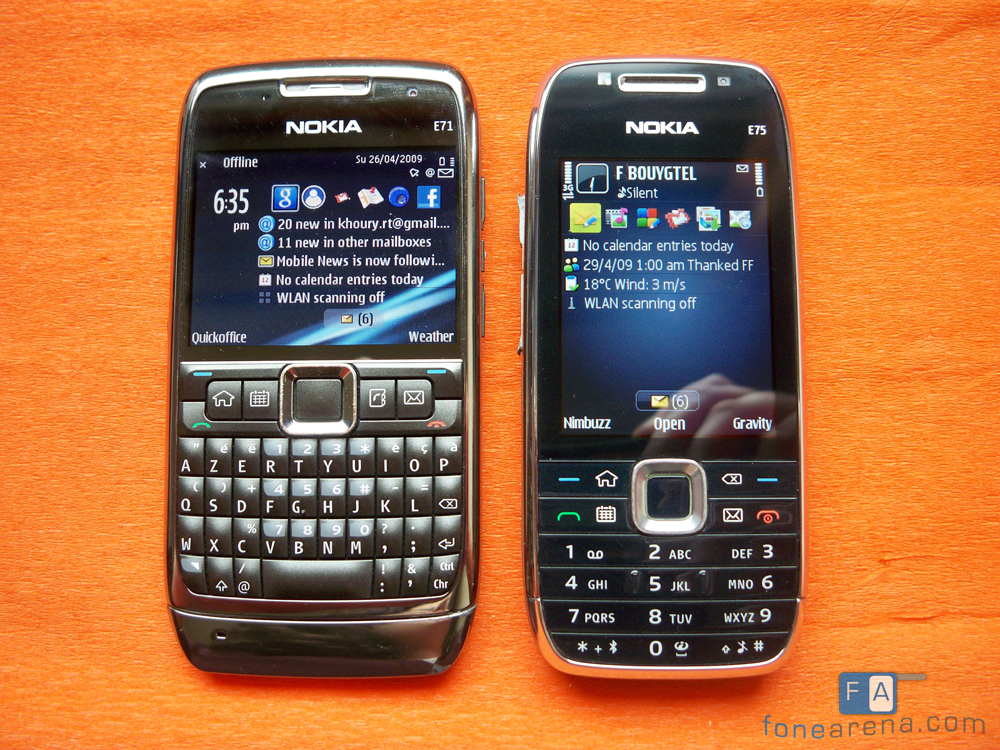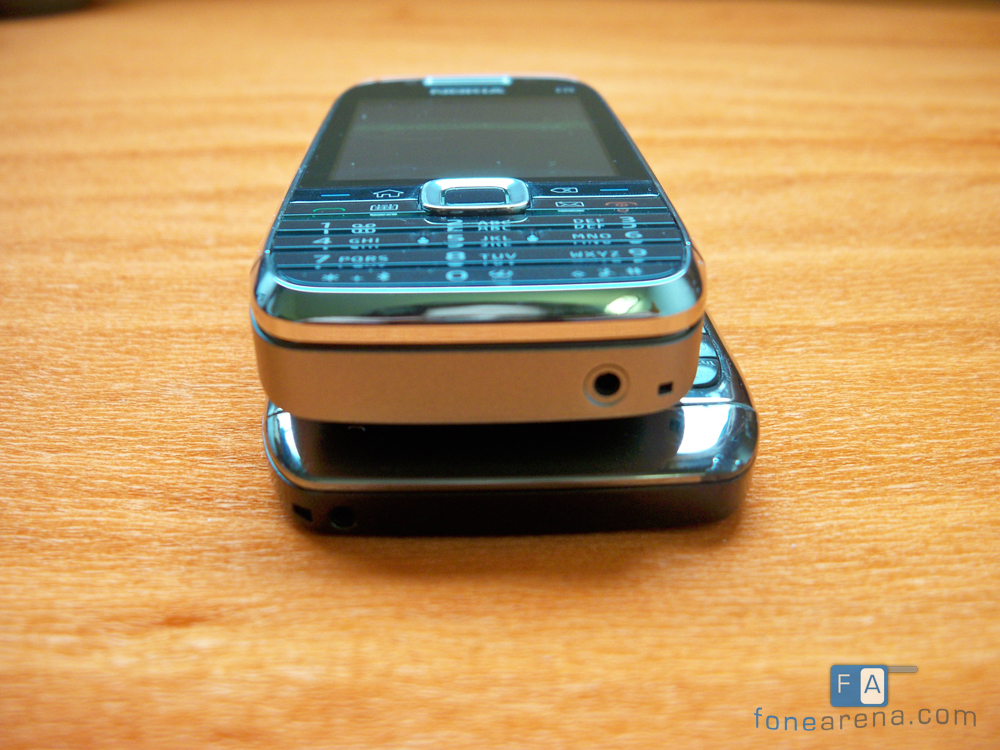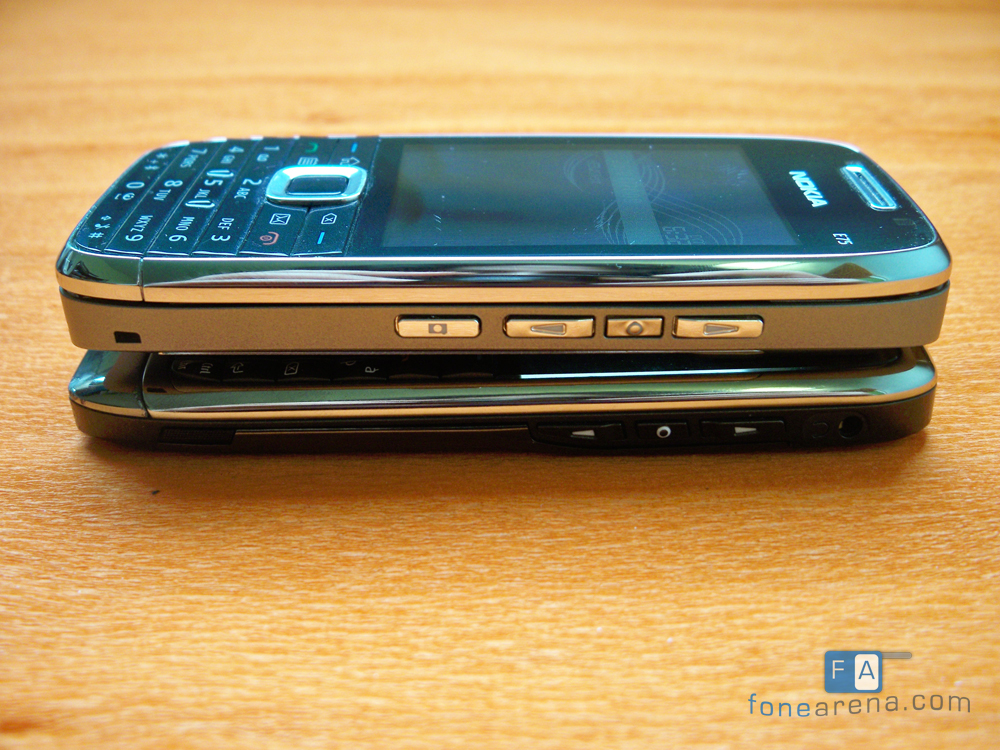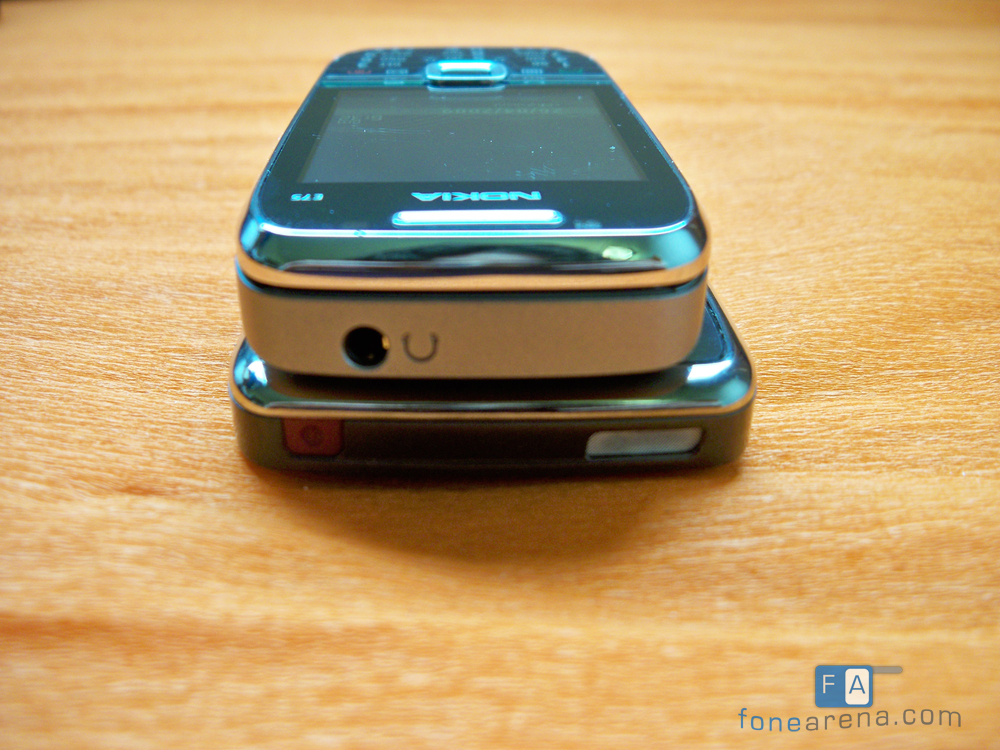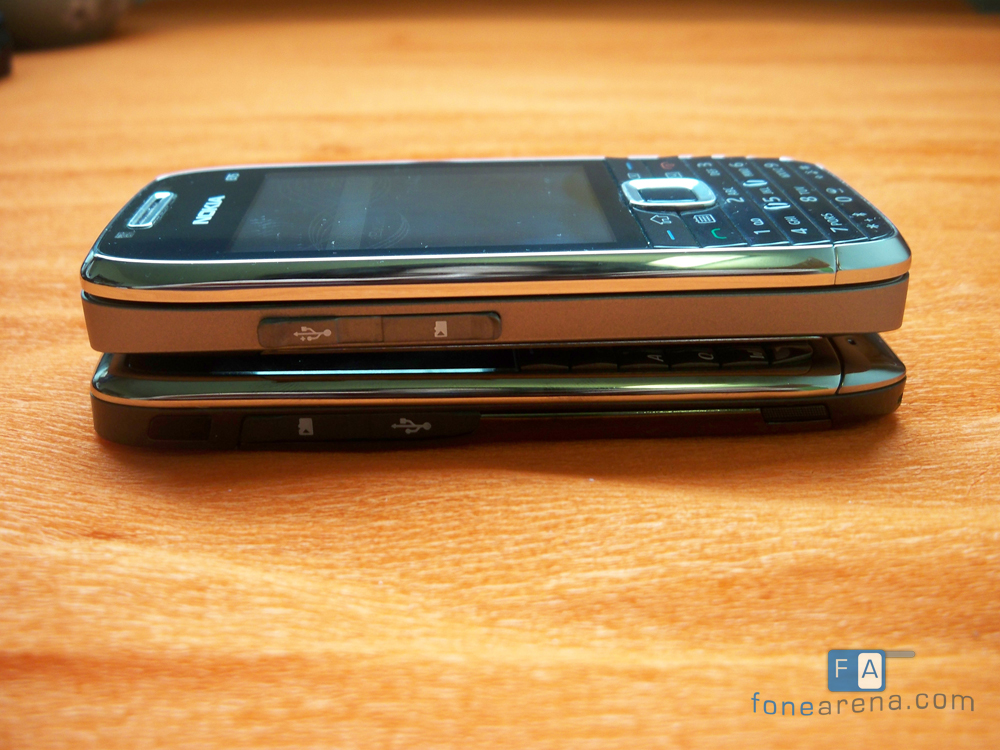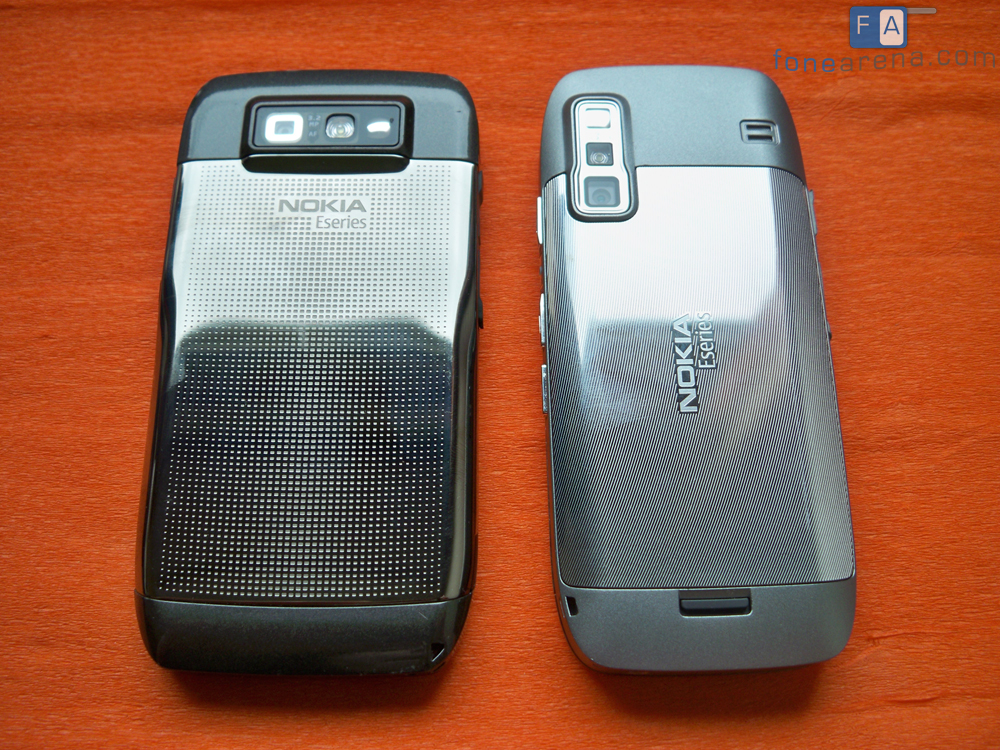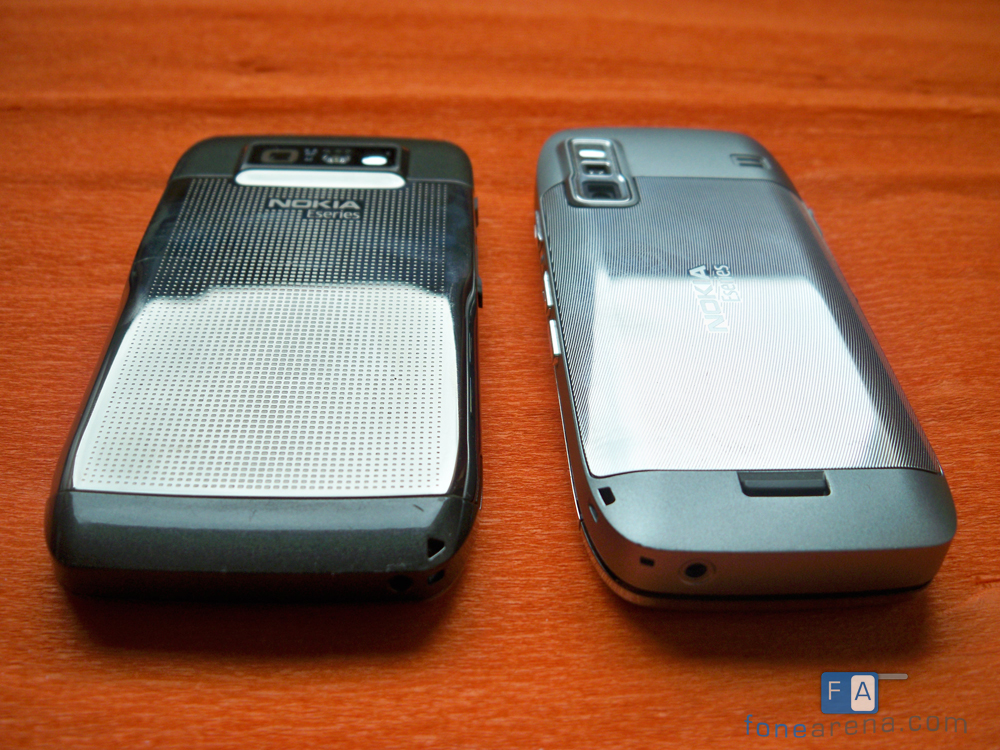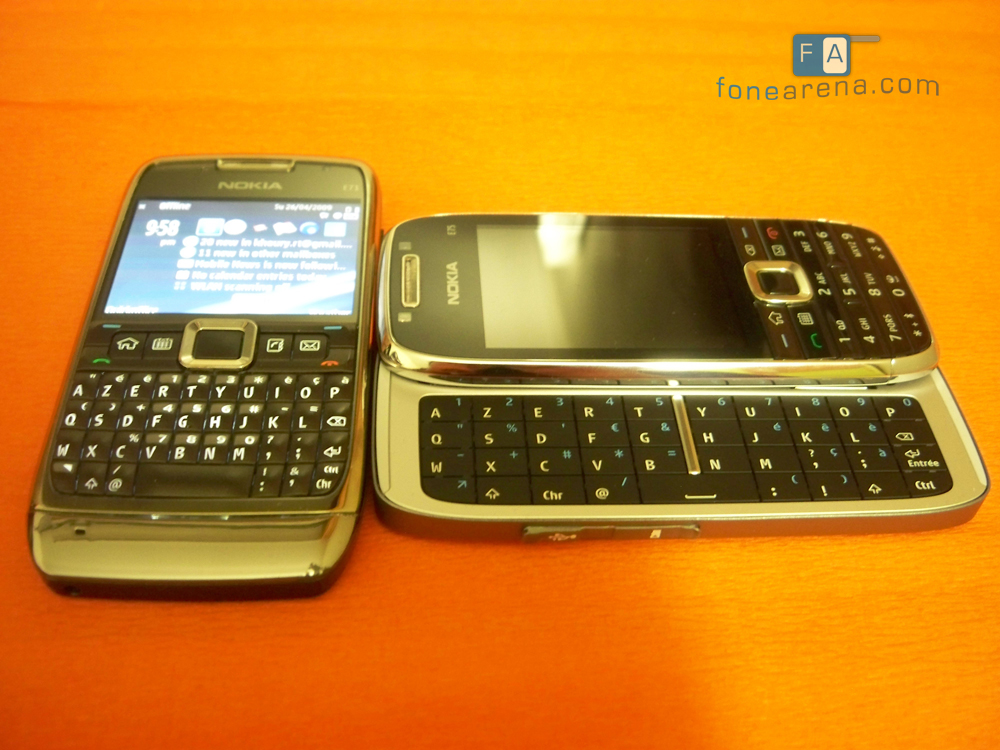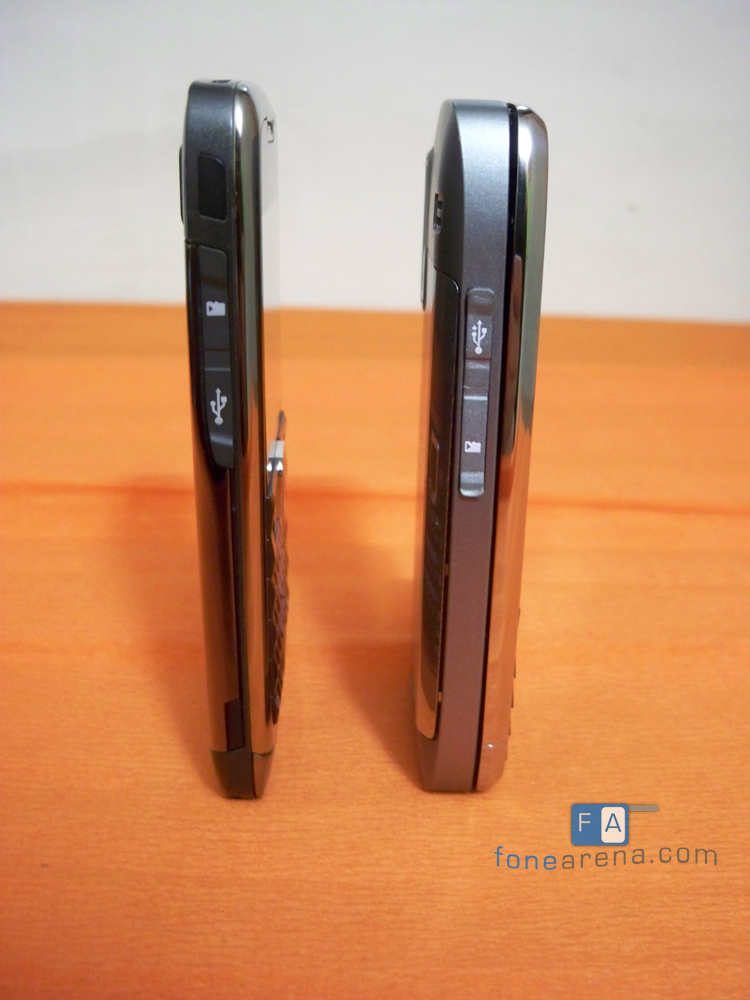Well, you have seen the Nokia E75 in all its glory, but how does it compare to everyone’s favorite Eseries device? The Nokia E71 can be considered as the E75’s big brother, it’s the device that brought QWERTY to the masses, as well as great build quality, and a multitude of features in a slim form factor.
The E75 carries the same design language, with metallic accents, but features a narrower size that makes it easier to hold it in one hand, especially when you’re making calls. It is also thicker which allows it to have the QWERTY slider form factor. Here are the comparison images, for your viewing pleasure (as always, click on the thumbnails for the full 12MP photos).
The front of both devices shows their difference: the E71 looks like a powerful messaging device, whereas the E75 has a regular mobile phone look. This could be considered as a positive or a negative aspect for the E75, depending on what you look for exactly in a mobile.
On the lower end, both handset have the charging pin, as well as the microphone whole. The E75 can be charged via the regular Nokia charger, but also supports MicroUSB charging.
The right side shows one main difference: the E75 has a Camera key that the E71 doesn’t have. This key allows you to launch the camera (although it takes a bit of time to do so), as well as autofocus and capture images. On the E71, you have to browse the menu to launch the camera, use the T key to autofocus, and then the d-pad to capture an image. Having a dedicated camera key is clearly a great advantage for the E75.
The top part of the devices shows that the E75 doesn’t have a Power button (the function is moved to the Red hang-up key), which can be quite underwhelming. On the positive side, the E75 has a regular 3.5mm headset plug, that is positioned correctly, allowing you to enjoy music on your favorite headset without jamming the wires if the phone is in your pocket.
The left side of both handsets offers a MicroUSB and MicroSD slots. The E71 has an InfraRed port, which doesn’t exist on the E75. It’s not much of a loss, as nobody uses IR anymore.
The back of the E75 and E71 is almost completely taken by the stainless steel battery cover, that features different design patterns between both devices. The one on the E75 makes it less fingerprint prone, and adds some ambiguity to the device’s design. There is also the 3.2MP camera, with the LED and the self portrait mirror.
Here is a picture showing the E75 with its QWERTY open, next to the E71. The keys on the E75 are basically double the size of those on the E71, and the whole QWERTY is also double the size on the E75. The E71’s keys are rounded, whereas the E75’s are very flat, but they both have a nice finish with a rubberized material. These keyboards offer a very different typing experience, and eventually, you can get used to both, even though it might seem hard at first if you’re coming from one design to another.
Here’s a final comparison picture showing how slim the E71 is compared to the E75. The E75 isn’t chubby at all, but it’s just the slimness of the E71 that makes it look thick.
This concludes our comparison between the E75 and the E71 on a hardware level. We’ll soon have a comparison between each device’s camera performance, outdoors and indoors in pitch darkness. Stay tuned!


